Although rainwater contains some atmospheric pollutants, it’s purer than tap water, and you can use it for many household purposes. Find out how to install a rain barrel system on your property and start experiencing the cost-saving advantages and environmental benefits of a rainwater collection system.
What is a Rain Barrel?
A rain barrel is a water tank that collects water runoff, usually from rooftops, through a system of gutters and pipes. Small rain barrels are often constructed from 40 or 50-gallon barrels and can be purchased ready to use or made from recycled plastic, steel, or fiberglass containers.
The Benefits of Rain Barrels in Sustainable Living
Sustainable living means making choices that have a positive impact on the future of the environment. There are many facets to sustainable living, but water plays a primary role in sustainability because it is so important to daily life.
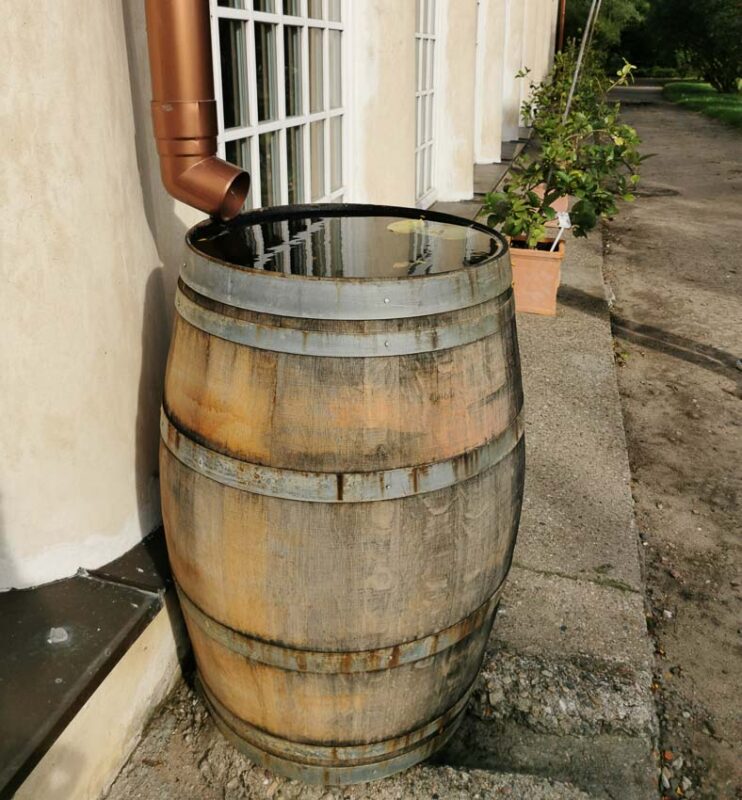
The average homeowner could capture about 30,000 gallons of water from their roof each year, although the amount varies depending on where you live and how much roof space you have.
- You can collect 0.623 gallons of water per square foot of roof space for every inch of rain.
- The average home in the United States has a 1,700-square-foot roof.
- The average rainfall in the lower US is 30 inches per year.
Benefits of Rain Barrels
There are numerous benefits to having a rain barrel system. Learn more about the cost advantages of harvesting rainwater.
Water Conservation
In the United States, water conservation is becoming more important as parts of the country are experiencing drought and water shortages. Rainwater is free; all you need is a rain barrel system to collect this precious resource.
During the growing season, approximately 40% of the water used in homes is for irrigation. Many people have switched to drip irrigation systems to conserve water. In fact, you can easily connect a rain barrel to your drip watering system to conserve even more water.
No matter how you use the water you collect in your rainwater barrel, the simple act of collecting rainwater and using it can change how household members view your water supply. Like any other resource, it’s less likely to be conserved when it’s perceived as unlimited.
Cost-Saving Advantages
There are direct savings whenever you use rainwater. On the other hand, it costs money whenever you open a water valve or turn on a faucet connected to the municipal water system.
Using a rainwater barrel can influence the attitudes of people in your household in relation to water conservation. People more concerned about water conservation use less, resulting in a lower water bill.
Water conservation also leads to other household savings. For example, if you use your rainwater collection system for your laundry, it’s not being heated, saving you money on your electric bill.
Rain Barrels and the Positive Impact on the Environment
In addition to the water conservation and cost-saving advantages, rain barrel systems have important positive impacts on the environment. They help stop erosion and keep pollutants and sediment out of stormwater drains and nearby water sources.
When sudden and intense rainstorms occur, all that water has to go somewhere. Usually, it goes into the storm drain system. In communities with poorly designed stormwater management systems, overflowing storm drains lead to peak flows in nearby streams and rivers, which leads to streambank erosion.
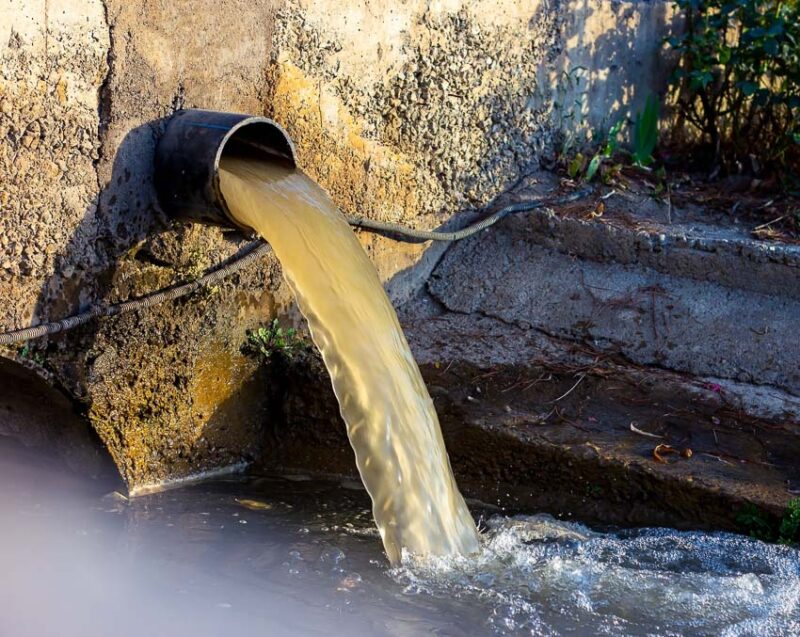
The runoff from your yard carries all the pollutants into nearby water sources and contaminates them. These may include lawn chemicals and sediment .
Harvesting rainwater reduces runoff, which is another benefit of rain barrels. This helps to mitigate the effects of erosion on your property. Furthermore, it prevents the leaching of lawn fertilizers and pesticides into lakes and streams.
Urban Ponds and Rainwater Collection Systems
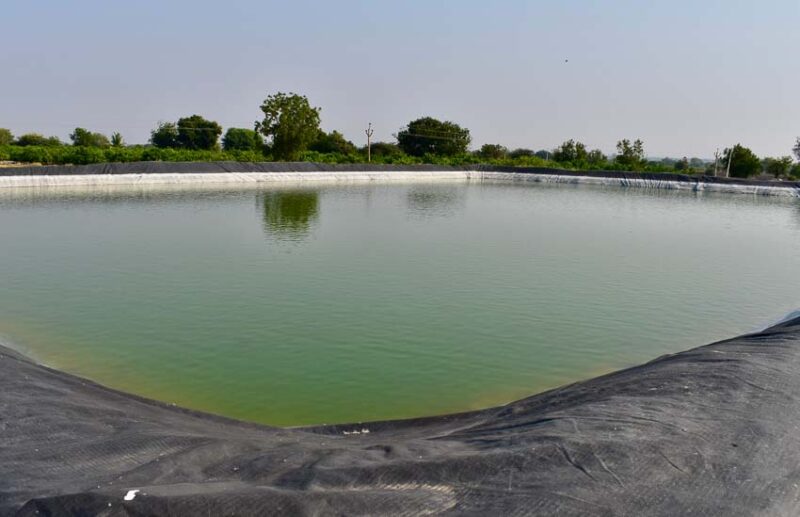
You can take your eco-friendly rainwater harvesting designs one step further by installing a backyard pond and using rainwater to keep it full.
Ponds create biodiversity that is beneficial for the ecosystem. Even a small pond will attract wildlife and beneficial pollinators, making your yard more vibrant and beautiful.
How they work
Rain barrel systems work in various ways.
Depending on the components, they can be as simple as a single barrel with a garden hose attached or more complex. Rainwater collection systems are frequently limited by cost, storage space, and aesthetics.
Rain Barrel System Components and Their Beneficial Roles
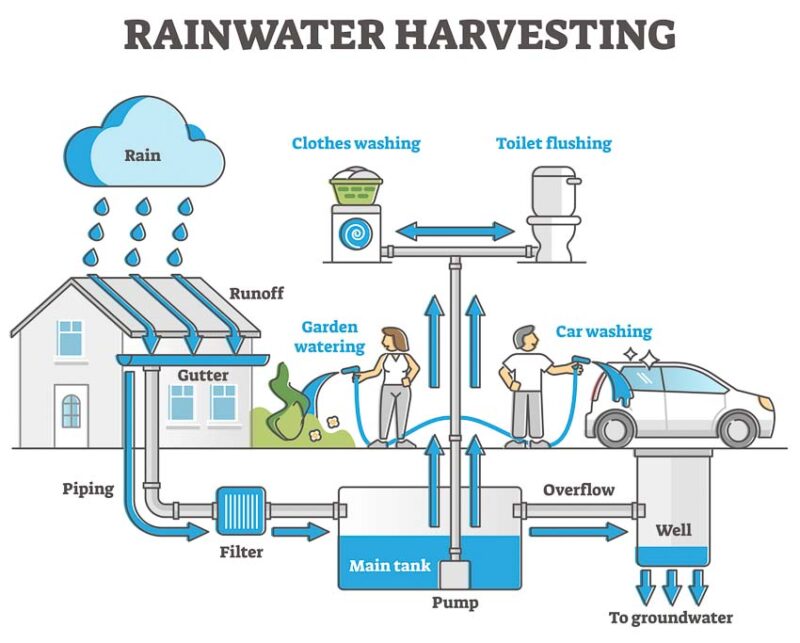
How you plan on using harvested rainwater is a critical question when you’re designing your system. If you plan to rely on rainwater for drinking water and household use, you need more storage capacity. You also need a larger catchment area and water treatment components.
On the other hand, if you’re simply connecting a rain barrel to a drip irrigation system for watering your garden or using it to wash your clothes, you’ll need fewer components. Before designing your system, consider your intended uses and select the components based on that.
Catchment Area
Most rainwater collection systems harvest the water that runs off roof surfaces. And the size of your roof and the amount of rainfall in your region will determine the amount of rainwater you can collect.
Don’t worry about increasing the catchment area size until you have more storage capacity.
Rain Barrel
Another benefit of a rain barrel system is that you can set it up with one barrel, or connect several in a series to have more storage capacity. Setting them on a platform makes it easier to drain them, and the closer they are to your downspout, the less piping you need. Choose a food-grade barrel so you don’t have to worry about toxins.
Flexible Downspout Adapter
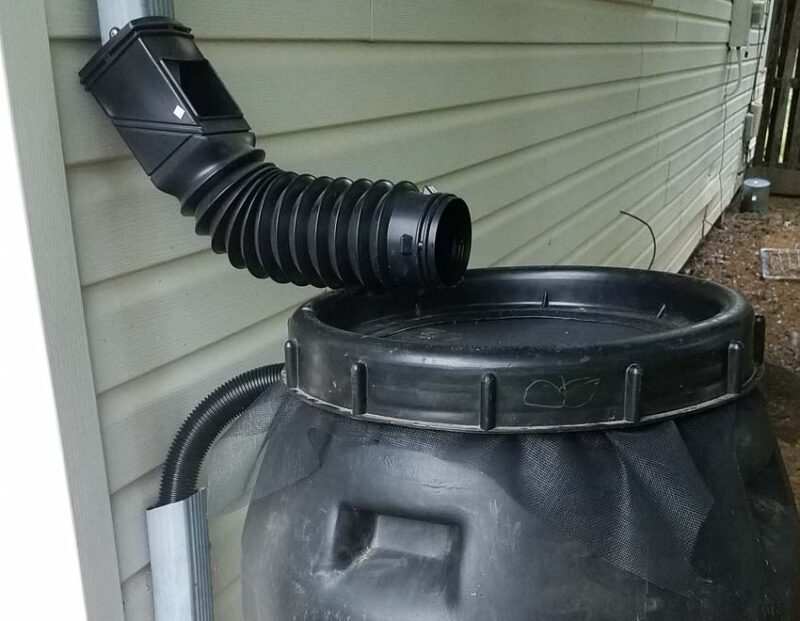
Water from your roof flows to the gutters, then into the downspout. A flexible downspout adapter makes connecting your home’s gutter system to your rain barrel easy. The rubberized diverter is easy to install and is flexible enough to work in any application.
Overflow Diverter
An overflow elbow will divert water away once your rain barrels are full. To combat erosion, you can divert the water to a swale, rain garden, or dry creek bed in your yard. Or you pipe the excess water to a backyard pond.
Filters and Screens
Rain barrel systems can be opened or closed, but wherever the rainwater comes into the barrel, you need a filter or debris screen. This keeps animals, plants, and insects out of your system.
With an open system, you should place a screen over the top of the barrel.
Spigot
The spigot is located at the bottom of the rain barrel. It has a valve and a hose connector, so you can attach a garden hose, hose wye, or drip irrigation system to use rainwater however you want.
The Process: Capturing, Storing, and Using Rainwater
Rainwater harvesting can be active or passive. In passive rainwater harvesting, rainfall is channeled to a specific part of your yard, like a rain garden, pond, or vegetable garden.
Active rainwater collection systems use rain barrels to collect and store rainwater. When you use water, you’ll notice the water level in the barrels go down, and when it rains, you can watch them fill up again.
Both types of rainwater harvesting are better for the environment. And you can use passive harvesting methods with your rain barrel system to handle the overflow.
By designing your landscape around rainwater harvesting, you’ll be able to minimize the water you use. Moreover, it will lessen the negative environmental impacts.
A Step-by-Step Guide to Installing Your Rain Barrel
There are many ways to set up a rain barrel system. Whether you purchase one or learn how to make a rain barrel yourself, learn what you should know before you purchase a rain barrel and how to install a simple rainwater collection system.
Buying vs DIY: Weighing Your Options
DIY rain barrels are less expensive but may need to be more aesthetically pleasing. It’s easy enough to find food-grade plastic barrels, but they aren’t as visually appealing as ones that are designed to look like oak barrels, for example.
Another benefit of purchasing a rain barrel kit is that it’s one of the easiest ways to install a rainwater collection system. It has all the necessary components to collect rainwater, including a spigot to attach a hose.
What to Consider When Buying a Rain Barrel
Before purchasing or making a rain collection barrel, be clear about how you’ll use it.
Rainwater collection systems are low-pressure, so they work well with drip irrigation systems or soaker hoses, but they won’t work with sprinklers. You also need to calculate how much water your roof space will capture and have a plan for the overflow.
Installation Process of a Rain Barrel System
Whether you’re DIYing it or buying a rain barrel that’s ready to go, follow these step-by-step instructions to start using harvested rainwater in your backyard.
Assemble the Rain Barrel
If you purchased a ready-to-use rain barrel, it may require some assembly. Should you DIY your rain barrel, you must ensure it has all the required components, including a downspout adapter, overflow diverter, filters, screens, and a spigot. If you want to pressurize your system, install an outlet with a pump.
Place Your Rain Collection Barrel
Choose the downspout you’ll use for your rainwater collection system, and place the rain collection barrel next to it. It should be placed on an elevated surface and secured to prevent tipping. Water weighs 8.3 pounds per gallon, so a 50-gallon barrel will weigh over 400 pounds.
Attach the Downspout Adapter
Once your rain barrel is secured, measure and mark where to cut the downspout so you can attach the adapter. Depending on the design of your system and adapter, you may only need to cut out a section of the downspout to install the adapter.
Direct the Overflow
After the rain barrel is set up, the final task is to direct the overflow so that the excess water doesn’t cause flooding or soil erosion around your home’s foundation.
Start Collecting Rain Water
After your system is installed, all you need is rain! The next time it rains, check the system to make sure it’s functioning properly.
Here are a few things to remember:
- The water is untreated, so humans or pets shouldn’t consume it.
- Treat it with anti-larval tablets to prevent mosquitoes.
- Treat it with vinegar to prevent algae.
- If your lid is open, ensure children and animals can’t fall in.
- Disconnect your system during the winter to keep it from freezing.
Enjoy the advantages of a rain barrel system and its positive contributions to the ecosystem in your backyard.
Benefits of Rain Barrels FAQs
Q1: Is Rainwater from a Rain Barrel Safe to Use?
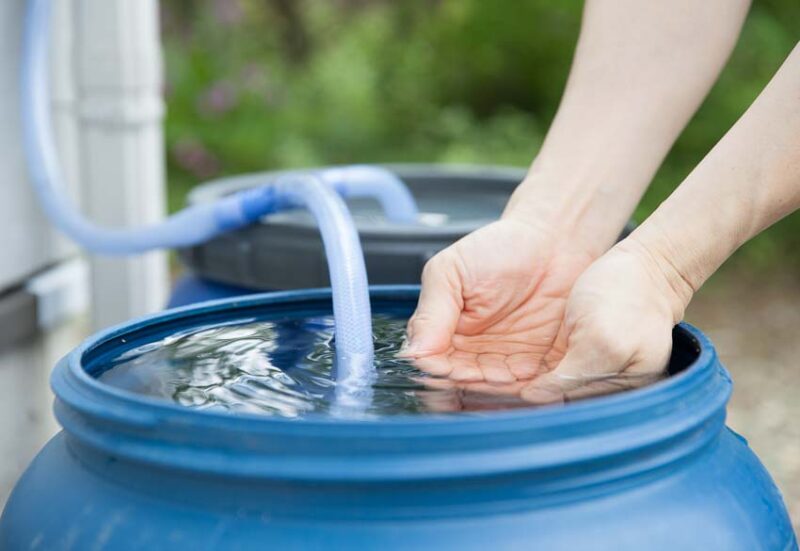
Rainwater is safe for watering plants, washing your clothes, and washing your car. However, it’s not considered safe to drink unless it has been filtered and treated.
You also shouldn’t bathe or cook with untreated rainwater.
Q2: How Much Water Can a Typical Rain Collection Barrel?
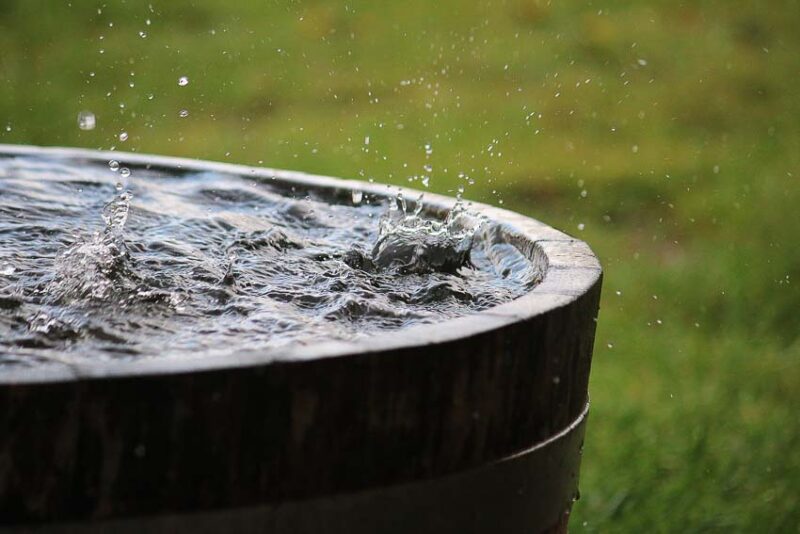
Most residential rain barrels are 50 to 90 gallons. If your gutters and pipes are properly installed, it takes about an hour for a 20 by 25-foot roof to fill up a 50-gallon barrel in a moderate rain storm.
Q3: How to Maintain and Clean a Rain Barrel?
Leaving water in your rain barrel can cause it to become a breeding ground for mosquito larvae and algae, so it’s important to drain and clean it regularly with dish soap.
Use vinegar to prevent algae growth, and keep the barrel covered to keep mosquitoes out. Keep your gutters debris free to reduce the amount of organic matter in your rainwater system.
Q4: What to Do with Overflowing Water from a Rain Barrel?
Even a half-inch of rain can provide a few hundred gallons of water from a small roof, so you must plan for an overflow of water. You can divert the excess water into a rain garden or an area landscaped with rocks to prevent erosion.
Q5: Can I Use Rain Barrel Water for My Indoor Plants?
Rainwater is the best water for indoor plants because it is soft and chemical-free. Many indoor plants are sensitive, so you should never water them with tap water. However, they will thrive on the water from your rain barrel.



